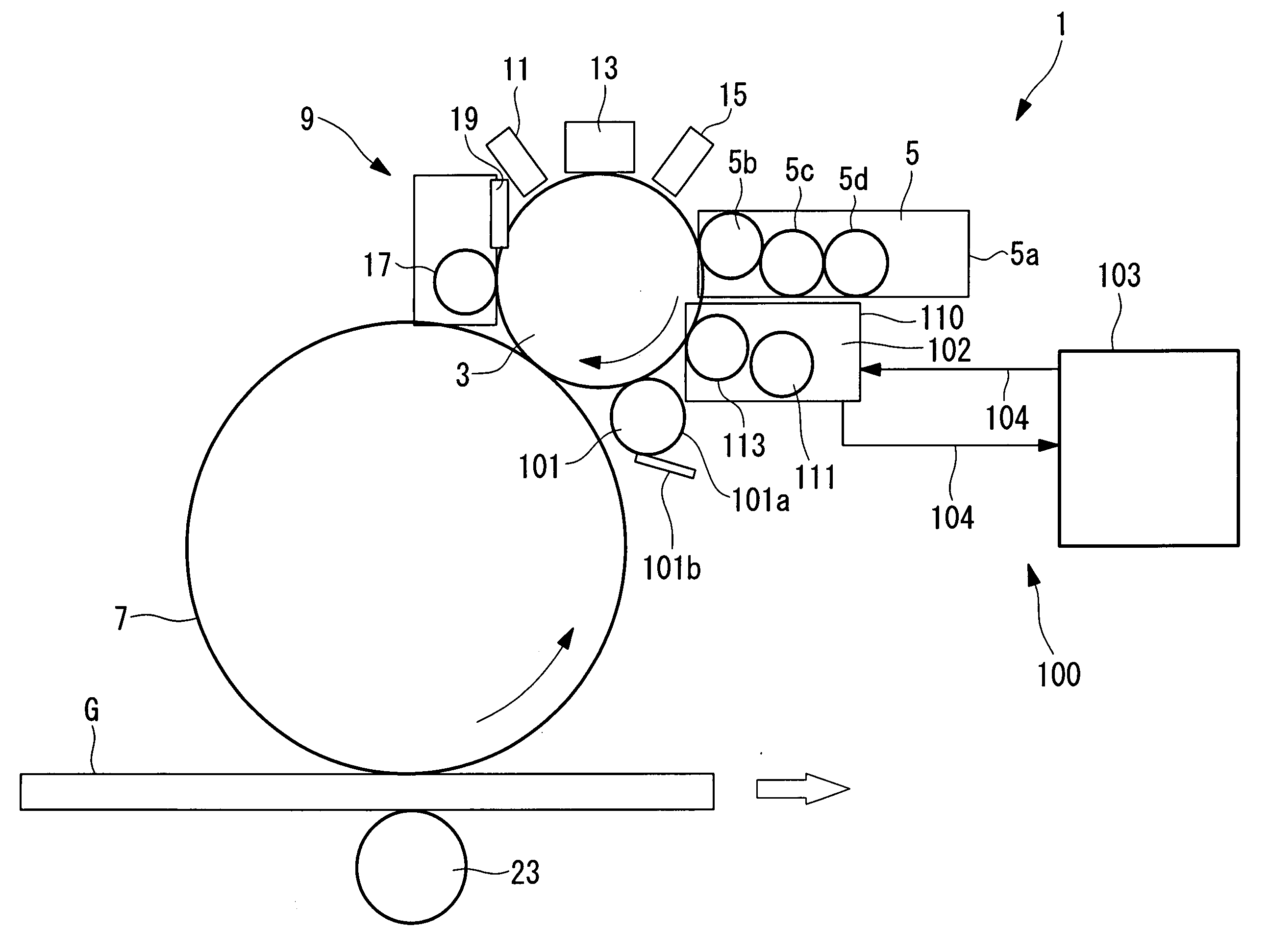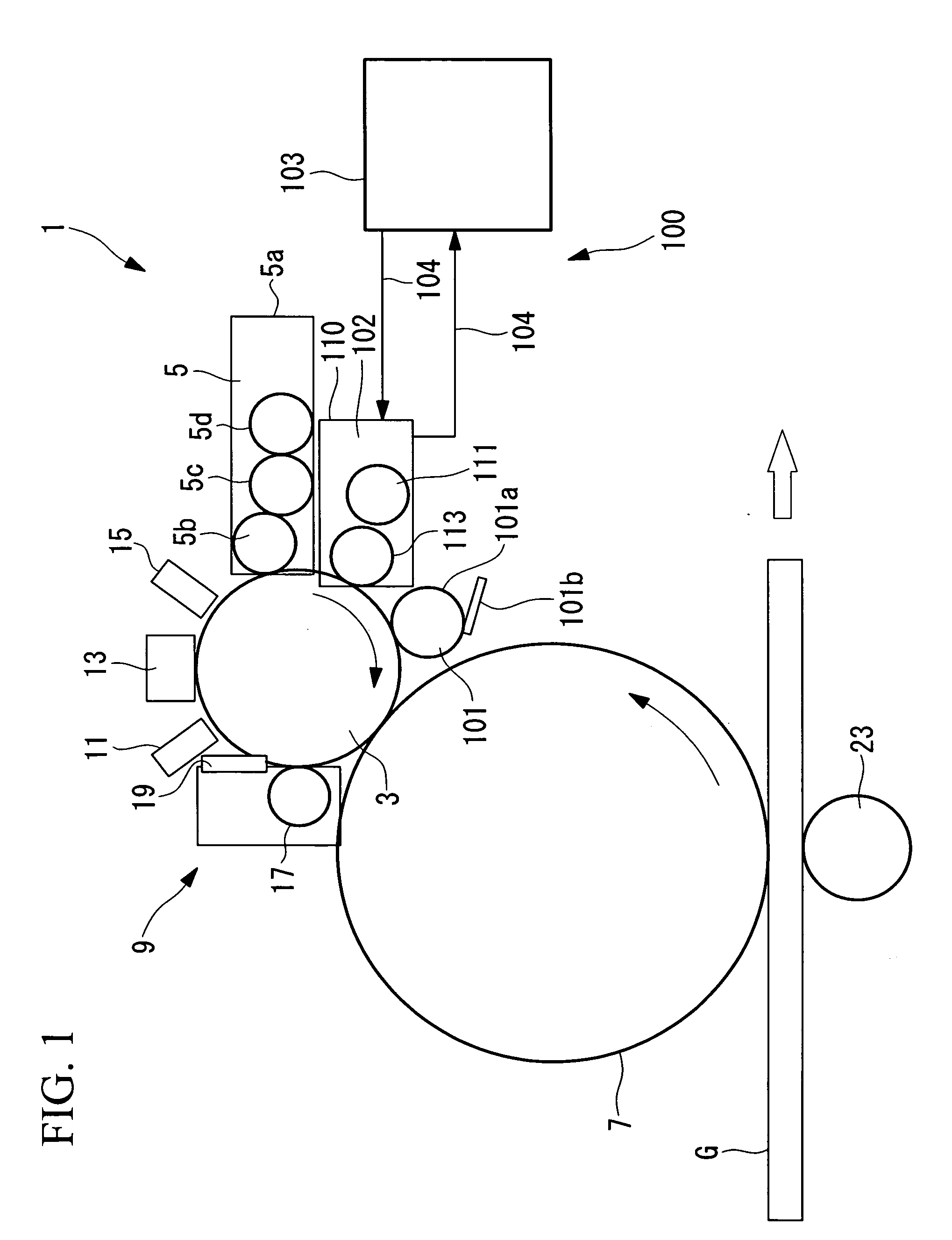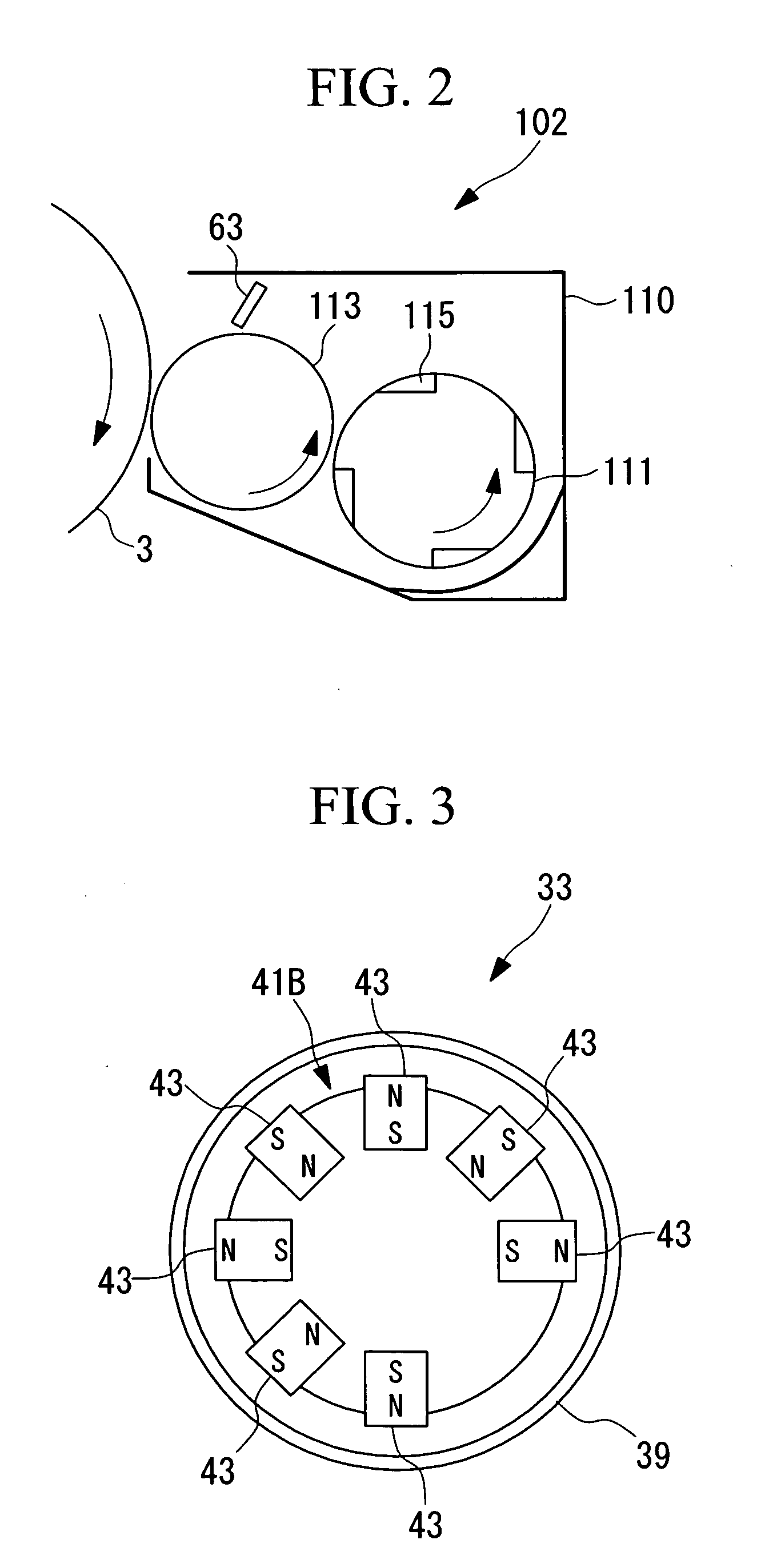Electrographic Printing Apparatus, Electrographic Printing Method, and Method of Producing Glass Plate
a printing apparatus and electrographic printing technology, applied in the direction of electrographic process apparatus, instruments, optics, etc., can solve the problems difficult to completely avoid the generation of base fogging at all, and the performance of the device is reduced, so as to achieve the effect of reducing the voltage tolerance, preventing base fogging, and small performance drop
- Summary
- Abstract
- Description
- Claims
- Application Information
AI Technical Summary
Benefits of technology
Problems solved by technology
Method used
Image
Examples
first embodiment
[0073]An electrographic printing apparatus according to a first embodiment of the present invention will be described below with reference to FIGS. 1 to 9.
[0074]FIG. 1 illustrates, in outline, the electrographic printing apparatus according to this embodiment.
[0075]As shown in FIG. 1, an electrographic printing apparatus 1 is mainly formed of an organic photoconducting (OPC) photoreceptor (photoreceptor) 3 that forms an image by selectively attracting a toner; a developing device 5 that supplies the toner, included in a developer containing the toner and a carrier, to the OPC photoreceptor 3; an intermediate body 7 that transfers the toner attracted to the OPC photoreceptor 3 onto a glass plate G; and a non-image-region toner removing device 100.
[0076]The electrographic printing apparatus 1 of this embodiment described below is employed to form a prescribed pattern of metal wires on the glass plate G.
[0077]The toner used in this embodiment is made by finely pulverizing a mixture of ...
second embodiment
[0150]Next, a second embodiment of the present invention will be described with reference to FIGS. 10 to 12.
[0151]The basic configuration of this embodiment is the same as that of the first embodiment, except that the configuration of the non-image-region toner removing device 100 differs. Therefore, in this embodiment, only this difference is described, and descriptions of other parts are not repeated.
[0152]Components that are the same as those in the first embodiment are represented by the same reference numerals, and detailed descriptions thereof are not repeated.
[0153]FIG. 10 illustrates, in outline, an electrographic printing apparatus according to the second embodiment.
[0154]As shown in FIG. 10, a non-image-region toner removing device (non-image-region toner removing unit) 200 includes a magnetic drum (supporting body) 203, a carrier delivering device 204, a magnetic head 205, a carrier cleaner 206, and a demagnetizing head 207.
[0155]The magnetic drum 203 is substantially cyl...
PUM
| Property | Measurement | Unit |
|---|---|---|
| particle size | aaaaa | aaaaa |
| particle size | aaaaa | aaaaa |
| particle diameter | aaaaa | aaaaa |
Abstract
Description
Claims
Application Information
 Login to View More
Login to View More - R&D
- Intellectual Property
- Life Sciences
- Materials
- Tech Scout
- Unparalleled Data Quality
- Higher Quality Content
- 60% Fewer Hallucinations
Browse by: Latest US Patents, China's latest patents, Technical Efficacy Thesaurus, Application Domain, Technology Topic, Popular Technical Reports.
© 2025 PatSnap. All rights reserved.Legal|Privacy policy|Modern Slavery Act Transparency Statement|Sitemap|About US| Contact US: help@patsnap.com



